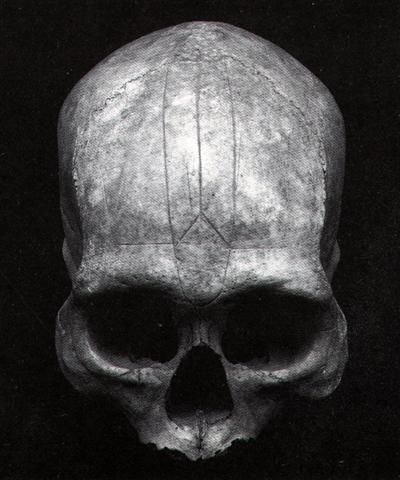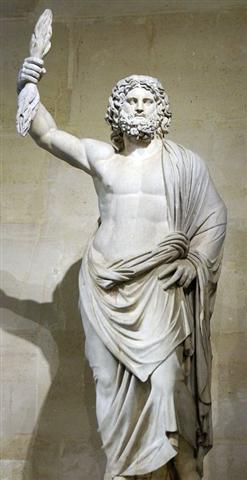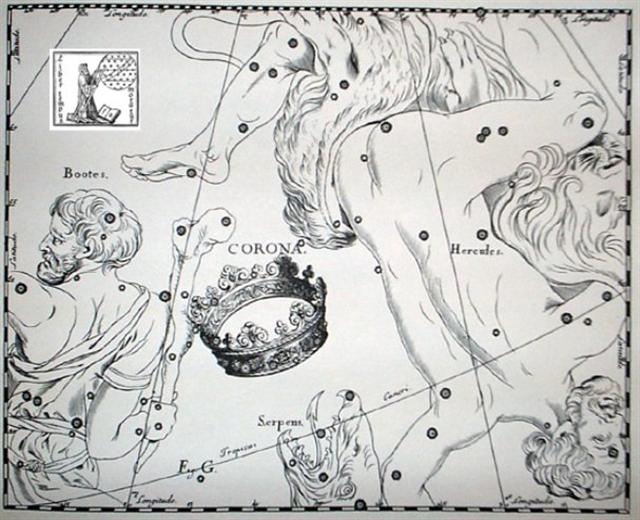If my (preliminary) translation is correct, the death of the (Great) Rat resulted in a multiplication of (smaller) ones: ... (When) a month had gone by - he tuu ki te tahi marama - Oti perceived lots and lots of rats (they had multiplied) - he ui.a Oti.ku piere.ana.te kioe ... The fundamental idea is that life implies death. Otherwise the world would quickly become overpopulated.
The (round) skulls of dead chiefs, for instance, were needed in order to induce many (round) eggs: ... Up to the present time, fertility spells for fowls have played an important role. Especially effective were the so-called 'chicken skulls' (puoko moa) - that is, the skulls of dead chiefs, often marked by incisions, that were considered a source of mana. Their task is explained as follows: 'The skulls of the chiefs are for the chicken, so that thousands may be born' (te puoko ariki mo te moa, mo topa o te piere) ... As long as the source of mana is kept in the house, the hens are impregnated (he rei te moa i te uha), they lay eggs (he ne'ine'i te uha i te mamari), and the chicks are hatched (he topa te maanga). After a period of time, the beneficial skull has to be removed, because otherwise the hens become exhausted from laying eggs ... 'Many little ones' (Al Thurayya) was a name the Arabs gave to their 27th station at the Pleiades.
... When the man, Ulu [Uru], returned to his wife from his visit to the temple at Puueo, he said, 'I have heard the voice of the noble Mo'o [Moko], and he has told me that tonight, as soon as darkness draws over the sea and the fires of the volcano goddess, Pele, light the clouds over the crater of Mount Kilauea, the black cloth will cover my head. And when the breath has gone from my body and my spirit has departed to the realms of the dead, you are to bury my head carefully near our spring of running water. Plant my heart and entrails near the door of the house. My feet, legs, and arms, hide in the same manner. Then lie down upon the couch where the two of us have reposed so often, listen carefully throughout the night, and do not go forth before the sun has reddened the morning sky. If, in the silence of the night, you should hear noises as of falling leaves and flowers, and afterward as of heavy fruit dropping to the ground, you will know that my prayer has been granted: the life of our little boy will be saved.' And having said that, Ulu fell on his face and died. Summoning her little boy, she bade him gather the breadfruit and bananas, and, reserving the largest and best for the gods, roasted the remainder in the hot coals, telling him that in the future this should be his food. With the first mouthful, health returned to the body of the child, and from that time he grew in strength and stature until he attained to the fulness of perfect manhood. He became a mighty warrior in those days, and was known throughout all the island, so that when he died, his name, Mokuola [Motu-ora], was given to the islet in the bay of Hilo [Hiro] where his bones were buried; by which name it is called even to the present time ...
There was a month (te tahi marama) before the effects of death - new light, sweet water, life - would become visible in plain sight. Marama 1. Month, light. The ancient names of the month were: Tua haro, Tehetu'up˙, Tarahao, Vaitu nui, Vaitu poru, He Maro, He Anakena, Hora iti, Hora nui, Tagaroa uri, Ko Ruti, Ko Korˇ. 2. Name of an ancient tribe. Maramara, ember. Vanaga. Light, day, brightness, to glimmer; month; intelligent, sensible; no tera marama, monthly; marama roa, a long term; horau marama no iti, daybreak; hakamarama, school, to glimmer; hare hakamarama, school, classroom. P Mgv.: mÓrÓma, the light, daylight; marÓma, wise, learned, instructed, moon. Mq.: maßma, light, broad day, bright, instructed, learned; meama, moon, month. Ta.: marama, moon, month. In form conditionalis this word seems derivative from lama, in which the illuminating sense appears in its signification of a torch. The sense of light, and of specifically the moon, appears in all Polynesia; in Futuna and Uvea the word signifies the world. The tropical extension to the light of intelligence is not found in Nuclear Polynesia, therefore not in the Proto-Samoan, but is a later Tongafiti development. Maramarama, bright; manava maramarama, intelligent. P Pau.: maramarama, intelligent. Ta.: maramarama, light, brightness. Churchill. The month sense is found in Tahiti, Marquesas, Rarotonga and Maori associated with the moon signification, and in Hawaii is specifically dissociated therefrom to characterize a solar month. Churchill 2.
... He was moreover confronted with identifications which no European, that is, no average rational European, could admit. He felt himself humiliated, though not disagreeably so, at finding that his informant regarded fire and water as complementary, and not as opposites. The rays of light and heat draw the water up, and also cause it to descend again in the form of rain. That is all to the good. The movement created by this coming and going is a good thing. By means of the rays the Nummo draws out, and gives back the life-force. This movement indeed makes life. The old man realized that he was now at a critical point. If the Nazarene did not understand this business of coming and going, he would not understand anything else. He wanted to say that what made life was not so much force as the movement of forces. He reverted to the idea of a universal shuttle service. 'The rays drink up the little waters of the earth, the shallow pools, making them rise, and then descend again in rain.' Then, leaving aside the question of water, he summed up his argument: 'To draw up and then return what one had drawn - that is the life of the world' ...
Possibly this 'month' (te tahi marama) measured 20 nights. ... The Gilbert Islanders are Polynesians, having emigrated, according to their traditions, from Upolu, Samoa, which they look upon as te buto (Maori pito), the Navel of the World. They never counted the nights of the Moon beyond the twentieth, so far as Grimble was able to ascertain, and in the vagueness of their lunar calendar bore no resemblance to their Micronesian neighbors of the Carolines ... One of the names for east, Makai-oa, was said to be the name of a far eastern land, not an island, which their navigators had visited in ancient times. Tradition called this great land 'the containing wall of the sea, beyond the eastern horizon, a continous land spreading over north, south, and middle, having a marvelous store of all sorts of food, high mountains and rivers'. It was also called Maia-wa (wa being 'space, distant'). This is a clear reference to ancient voyages to the American coast from which the Polynesians are thought to have introduced the sweet potato into the Pacific area. The similarity of Maia to Maya may be more than a coincidence ... ... Eggs are always counted in groups of 20 (scores) ... And so should all other similarly formed 'persons' be counted, like for instance all kinds of sweet potatoes (kumara). ... A crack opened up in the ground, and the Rat was put down into the pit, to rest there. - he hakatopa i te kioe.ki raro ki te rua.he hakarere. (Where) he was nourished by sweet potatoes. - he hangai.hai kumara. 214 / 20 → 107 = 80 + 27. ... The number written in stone in the tresses on the back of Pachamama (the World Mother) is 182 (→ 364 / 2) + 214 (→ 2-14 or February 14) = 396. And 214 - 182 = 32 ... ... Once upon a time there was an old woman who owned a great potato field (mara) where she planted her potatoes in spring and harvested them in autumn. She was famous all around for her many varieties of wonderful potatoes, and she had enough of them to sell at the market place. She planted her potatoes 7 in a row, placing her foot in front of her as a measure from one potato to the next. Then she marked the place with a bean - which would also give nourishment to the surrounding potatoes. Next she changed variety and planted 7 more followed by another bean, and this was the pattern she followed until all her 214 varieties had been put down in their proper places. She had drawn a map which she followed and from where each sort of potato could be located at the proper time for its harvest ... Makoi went withershins around Easter Island - therefore the great rat was nourished by lots of sweet potatoes instead of the other way around. This, I guess, is the message in the burial of the rat .... (When) a month had gone by - he tuu ki te tahi marama - Oti perceived lots and lots of rats (they had multiplied) - he ui.a Oti.ku piere.ana.te kioe ... ... Beyond the last type of yam (at Bharani) came 21 types of kumara (sweet potatoes):
The star Beid (the Egg in the Eridanus River, He Mamari Kiakia) was the last one to be mentioned - and notably it was given number 20 instead of the expected 20 + 1 ... 417 (my suggested last day for Te Kiore Uri) + 20 = 437 (MARCH 13, 72 + 365), and here was Alcyone:
|
||||||||||||||||||||||||||||||||||||||||||||||||||||||||||||||||||||||||||||||||||||||||||||||||||||||||||||||||||||||||||||||||||||||||||||||||||||||||||||||||||||||||||||||||||||||||||||||||||||||||||||||||||||||||||||||||||||||||||||||||||||||||||||||||||||||||||||||||||||||||||||||||||||||||||||||||||||||||||||||||||||||||||||||||||||||||||||||||||||||||||||||||||||||||||||||||||||||||||||||||||||||||||||||||||||||||||















